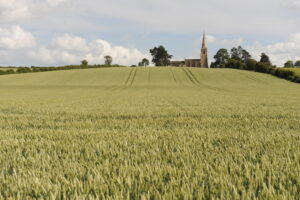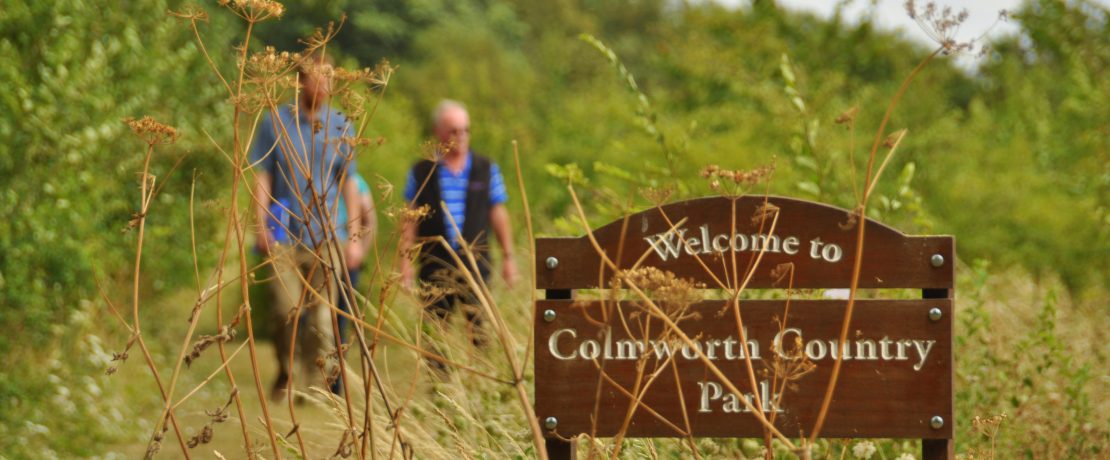Discover: the villages of north-east Bedfordshire
We hope our whistlestop tour of villages will whet your appetite for exploring this rural corner of the county.
From fascinating facts to local walks, there’s something for everyone.
Swineshead
For most of its history Swineshead was in Huntingdonshire, despite being completely surrounded by Bedfordshire parishes. In 1896 it was transferred into Bedfordshire in exchange for Tilbrook, which was transferred into Huntingdonshire.
There are two theories about how the village got its name which has gone through a number of versions including Swanneshed and Swaynshead. The first is that it just means a swine’s head. The theory is that posts with animal’s heads on them, or representations of them, were set up to mark places for public meetings. In this case, the later changes in name probably mean that the residents preferred to be associated with swans rather than pigs. The other theory is that it means pig’s hill, perhaps from the grazing of swine on the nearby slopes.
Download: Swineshead circular walks (PDF)

Pertenhall
In 1823 a Moravian Chapel was built in the village. The Moravian Church was established in Bohemia in 1457. During the 1730s members of the Moravian Church passed through England on their way to spread the word across the globe. They were welcomed by some evangelical Church of England clergy, including John Wesley. Little remains of the chapel which was demolished in 1976, although the gravestones remain.
Discover local footpaths via the Pertenhall Rights of Way map
Little Staughton
In 2011, All Saints church, Little Staughton was commended in the CPRE Bedfordshire Living Countryside Awards. We wrote in our awards brochure: “The villagers were outraged when thieves stole the copper lightning conductor from the church in 2007, pulling down the top two metres of its stone spire in the attack. It has now been replaced and the building has recovered its former glory as a prominent landmark on the North Bedfordshire wolds.”

Great Staughton is just over the border in Cambridgeshire but the following local walks may still be of interest.
Walks in and around Great Staughton.
A Guide To The Walks Around Great Staughton by Anthony Withers.
Colmworth
In 2010 Colmworth was awarded a CPRE Mark, the top award in our Living Countryside Awards. This was given jointly to the church and the country park. “A five hectare field has been developed into an informal, peaceful countryside space for public use. It includes a large quantity of new native tree planting, the creation of a wildflower meadow, enlargement of an existing copse and the improvement of a large pond. The project is the result of local consultation and fundraising, with all the work carried out by village volunteers.”
At St Denys Church, “A major restoration project undertaken by the people of the village, employing local craftsmen and making ingenious use of recycled materials to reduce cost and preserve originality. The woodwork in the church, which had suffered from extensive rot and death watch beetle attack, was skillfully remodelled by a local cabinet maker and the church interior, with its unique features, is now secured for future generations.”

The country park picked up a second award in 2018, following further work to encourage biodiversity.
Bolnhurst
Bolnhurst was home to a Romano-British settlement. Archaeologists have discovered a range of finds and marks in the soil which show walls, ditches and banks. The finds include pottery, brooches and coins.
Keysoe
At the time of the Domesday Book in 1086 there were two estates in Keysoe. The largest was held by Hugh de Beauchamp, who later became Baron of Bedford. It contained nine villagers, six smallholders and one slave. The total population was probably around 64. There was a watermill worth two shillings and enough woodland to support 200 pigs.
Thurleigh
The airfield at Thurleigh was built in 1941 and as a result the area played an important role in World War Two. You can read the full story on the Bedfordshire Archives website. A memorial to the 306th Bomb Group USAAF can be found at the 306th Bombardment Group Museum.
Download: Thurleigh Heritage & Countryside Walk (PDF)
Riseley
Thanks to the clay rich local soil, Riseley has a long tradition of brick and tile making, dating back to at least 1558. During the nineteenth century the village was home to a brickworks and brickmaking became one of the village’s main industries. The village also had a history of lace making with 80 of the 118 houses in the village taking part at the time of the 1851 census.
Discover walks around Riseley.
Knotting

In 2011, St Margaret of Antioch church was awarded a CPRE Mark in our Living Countryside Awards. We said: “The Churches Conservation Trust assumed care of the tiny village church in 2009 when its congregation became too small to sustain its regular use for services. Since then the Grade1 listed building has been meticulously restored using traditional materials and skills in a two-year programme. It has a charming and simple interior with a timeless, rustic feel and is now well protected and prepared for its next few hundred years.”
East Park Energy
CPRE Bedfordshire is aware of a proposed large new four site solar farm close to many of these villages.









